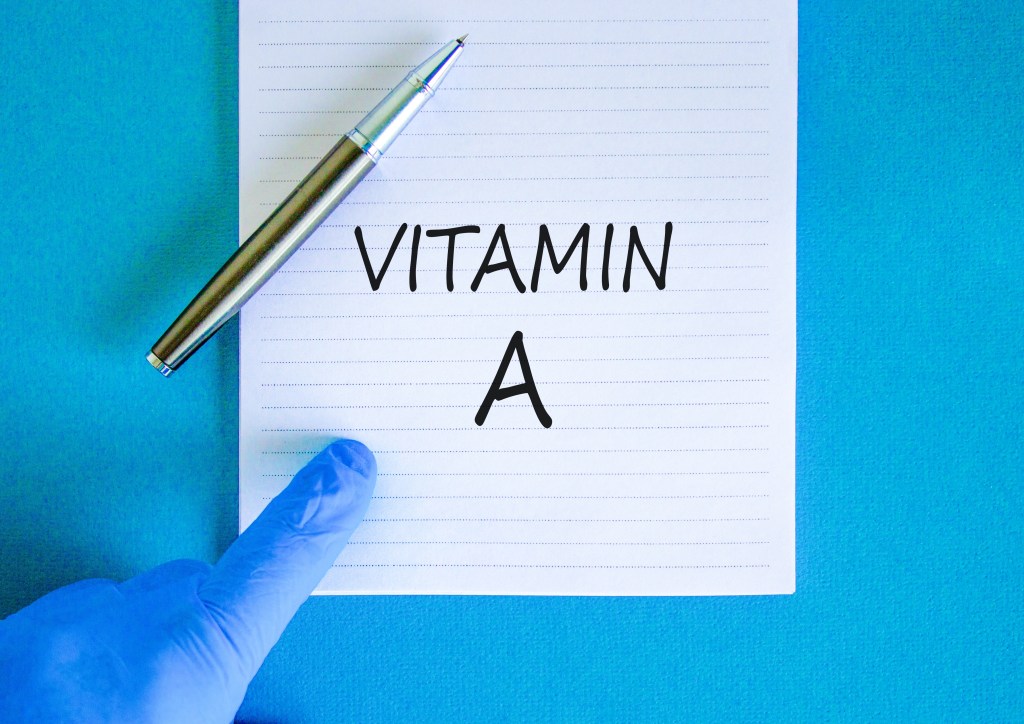At a glance
Dry eyes can result from imbalances in the tear film, often influenced by diet, environment, and overall health. Understanding the causes of dry eyes, such as nutrient deficiencies and high-carb diets, can help you take natural steps to restore comfort and support healthy tear production.
Dry eyes are a frustrating condition that can significantly affect your quality of life, as eye dryness can impact your ability to see clearly, concentrate, and complete day-to-day tasks.
While occasional dryness may be linked to weather or allergies, persistent symptoms often point to deeper underlying factors–many of which can relate to nutritional imbalances.
Discover four common causes of dry eyes and learn how to promote natural moisture balance in the eyes.
What are dry eyes?
Dry eyes occur when the tear film, the watery layer that helps keep the eyes lubricated, becomes imbalanced or unstable.
A healthy tear film comprises three layers:
- The mucin layer forms the innermost layer lining the inside of the eyelids and covering the white part of the eye. It comprises gel-like proteins that help tears spread evenly across the cornea and adhere to the eye’s surface.
- The aqueous layer, produced by the lacrimal glands, forms a watery middle layer that delivers hydration, oxygen, and nutrients to the eye.
- The lipid layer contains a fatty substance called meibum, which is secreted by the meibomian glands on the inner eyelids. This oily layer forms a protective topcoat over the eye’s surface that helps prevent evaporation and supports tear stability.
When any part of the tear film is disrupted, it can impact eye functions and comfort, resulting in dry eye symptoms, which can lead to other complications if left unaddressed.
Aqueous-deficient dry eye syndrome occurs when the lacrimal glands don’t produce enough fluid to keep the eye properly lubricated.
Evaporative dry eye develops when the tear film’s oily layer is impaired, causing tears to evaporate too quickly.
Common symptoms of dry eyes include:
- Dryness or a sandy, gritty feeling
- Itching, burning, or stinging
- Redness or inflammation
- Eye fatigue
- Sensitivity to light
- Blurred or fluctuating vision
- A feeling of a foreign object in the eye
- Watery eyes
According to data published by the National Eye Institute (NEI), left untreated, chronic dry eye can damage the tear duct and cornea, increasing the risk of pain, inflammation, corneal ulcers or scarring, and even a degree of vision loss.
Watch the video below to learn what causes dry eyes and natural ways to promote eye comfort.
What causes dry eyes?
Dry eyes are often linked to dietary and environmental factors that can affect tear quality and stability.
Here are four common causes of dry eyes and what you can do about them.
1. High-carb diets
One of the most overlooked contributors to dry eye symptoms is a diet high in refined carbohydrates and sugars.
“High-carb eating causes repeated blood sugar and insulin spikes that, over time, can contribute to insulin resistance,” explains Dr. Berg. “This imbalance can significantly stress the vascular system and disrupt nutrient delivery to tissues–including the nerves that help maintain a stable tear film.”
Research supports this connection, and a study published in Diabetes, Metabolic Syndrome and Obesity found that individuals with higher fasting blood glucose levels had more severe dry eye disease symptoms than those with normal glucose levels.
High-carb diets may also reduce the uptake or deplete essential nutrients for eye health, such as vitamins A, B1, B12, D, E, and K.
Since diet influences both insulin function and nutrient availability, shifting toward a low-carb, nutrient-dense meal plan, such as Healthy Keto®, can provide long-term support for eye comfort.

2. Imbalanced fatty acid intake
Your eyes rely on healthy fats to function properly, particularly for maintaining the retina, lens, and tear film.
Without adequate amounts of saturated fats, cholesterol, and omega-3 fatty acids, your body may struggle to produce the lipids needed to keep the eyes lubricated.
Moreover, diets high in unhealthy fats, such as refined seed oils like canola oil, soybean oil, and corn oil, contain excessive amounts of omega-6 fatty acids, which can contribute to unstable ocular fluid production.
Research published in Investigative Ophthalmology & Visual Science highlights that consuming more omega-6 fatty acids than omega-3 fatty acids was linked with tear film dysfunction and ocular surface stress, two key factors in the development of dry eyes.
To provide the eyes with the building blocks needed to maintain moisture, it’s recommended to replace omega-6-rich seed oils with nutrient-dense fats such as grass-fed butter, beef tallow, ghee, and egg yolks.
Additionally, wild-caught fatty fish, such as cod liver, mackerel, and sardines, and grass-fed beef are excellent sources of healthy fats and fat-soluble vitamins A, D, E, and K, which further support tear film integrity and ocular surface health.

3. Lack of vitamin A
Vitamin A plays a central role in keeping the eyes comfortable and well-lubricated. Without enough vitamin A, eyes can become rougher and less efficient at maintaining moisture.
Research published in Cureus summarizes: “Vitamin A is crucial for mucin-producing conjunctival goblet cells. Their dysfunction can lead to the development of severe dry eye disease and associated complications.”
Vitamin A deficiency can also thicken epithelial cells that line the glands of the eye and ocular surface. Over time, this may lead to blockages of ducts, preventing the excretion of protective tear films and further contributing to eye dryness.
Animal products are the best dietary sources of vitamin A, as they offer its active form, retinol. Unlike beta-carotene found in plant foods, which must be activated in the liver, retinol can be utilized immediately.
Some of the top whole food sources of bioavailable vitamin A include grass-fed beef liver, wild-caught cod liver, pasture-raised egg yolks, and grass-fed butter.
Absorption of vitamin A also depends on overall fat metabolism. Since it’s a fat-soluble vitamin, it requires healthy bile flow, optimal liver function, and adequate sources of dietary fat to be utilized and stored efficiently.
This highlights the importance of adopting a nutrient-dense diet such as Healthy Keto, which supports fat adaptation, fat-soluble vitamin absorption, and overall metabolic function.

4. Environmental factors
External conditions can also impact the tear film, as individuals who wear contact lenses are at increased risk of dry eyes.
In addition, air conditioning, central heating, and dry climates can speed up tear film evaporation, especially when the lipid layer is compromised. Windy weather and seasonal shifts may also dry out the eyes or increase exposure to airborne irritants.
Exposure to cigarette smoke or secondhand smoke, as well as allergens such as pollen, pet dander, or dust, can trigger ocular inflammation and discomfort on the eye’s surface.
Looking at a computer screen for long periods can reduce blink rate, preventing tears from spreading evenly and causing the eyes to dry.
To help keep the eyes healthy, take regular breaks from screens. Additionally, staying hydrated, using a humidifier, avoiding irritant exposure, and wearing wraparound sunglasses in harsh environments can also help reduce tear evaporation and protect the eyes.
Other risk factors for dry eyes may include laser eye surgery or refractive surgery, age-related decline, and certain prescription medications.

When to talk to your doctor
While occasional dryness can potentially be managed with lifestyle changes and nutritional adjustments, it’s important to consult an eye doctor if you notice painful eyes, blurry vision, a gritty or itchy sensation, or sudden sensitivity to light.
In some cases, dry eyes can signal underlying medical conditions, including meibomian gland dysfunction, Sjogren’s syndrome, liver disease, thyroid eye disease, blepharitis, high blood pressure, or rheumatoid arthritis.
In addition to lifestyle modifications, a healthcare practitioner may suggest various treatments, such as therapeutic contact lenses, eye drops, nasal spray, or surgery, depending on the exact underlying cause of dry eyes.
Early diagnoses and timely medical intervention can help relieve eye discomfort, protect vision, and support long-term ocular health.
Key takeaways
- Dry eyes develop when the tear film becomes unstable due to factors such as nutrient deficiencies, high-carbohydrate diets, environmental irritants, medications, genetics, or underlying health conditions.
- Common symptoms include dryness, redness, irritation, blurred vision, sensitivity to light, and a gritty or burning sensation in the eyes.
- Imbalanced fatty acid intake, particularly from seed oils high in omega-6 fats, may disrupt tear stability and reduce moisture retention.
- Vitamin A deficiency limits mucin and tear production, contributing to eye dryness and discomfort.
- A Healthy Keto® diet supports eye comfort by focusing on foods rich in eye-supportive nutrients while reducing refined carbohydrates and processed ingredients that may contribute to dryness and inflammation.
FAQ
1. What is dry eye?
Dry eye refers to a condition where the eyes don’t produce enough tears or lose moisture too quickly. This is typically caused by an unstable tear film linked to nutrient imbalances, which often leads to irritation, dryness, and visual discomfort.
2. What causes dry eyes?
Common causes of dry eyes include a high-carb diet, vitamin A deficiency, omega-3 fatty acid imbalances, hormonal changes, or environmental irritants like cigarette smoke, dry air, and screen time.
Other contributing factors include aging, harsh weather conditions, certain medications, and autoimmune conditions.
3. What is the best remedy for dry eyes?
To help maintain normal tear production, include foods rich in omega-3 fats and vitamin A, such as sardines, mackerel, and liver, while limiting processed foods and refined sugar.
You can also protect your tear film by avoiding dry indoor air, secondhand smoke, and extended screen exposure. For extra support, use a humidifier, warm compresses, and wear wraparound sunglasses outdoors.
4. What deficiency can cause dry eyes?
While several nutrient deficiencies can contribute to dry eyes, vitamin A deficiency is the most recognized, as this fat-soluble vitamin is a crucial component for eye function and maintenance of the tear film.
In addition, a lack of omega-3 fatty acids and low levels of vitamins B1, B12, D, and E can also lead to dry eye symptoms.
5. What can be mistaken for dry eyes?
Eye discomfort can arise due to allergies, fatigue, an eye infection, or contact lens use. A professional evaluation can help clarify the root cause.
6. Can hormonal shifts cause dry eyes?
Yes, hormonal changes can contribute to tear film instability and dry eye symptoms. Shifts in estrogen, progesterone, or androgen levels, often linked to menopause, may affect the glands that produce tear films, potentially making dryness more noticeable.
Sources
- https://www.nei.nih.gov/sites/default/files/health-pdfs/factsaboutdryeye.pdf
- https://pmc.ncbi.nlm.nih.gov/articles/PMC11806745/
- https://iovs.arvojournals.org/article.aspx?articleid=2520646&
- https://assets.cureus.com/uploads/case_report/pdf/78527/20220405-13380-yw7dly.pdf


















